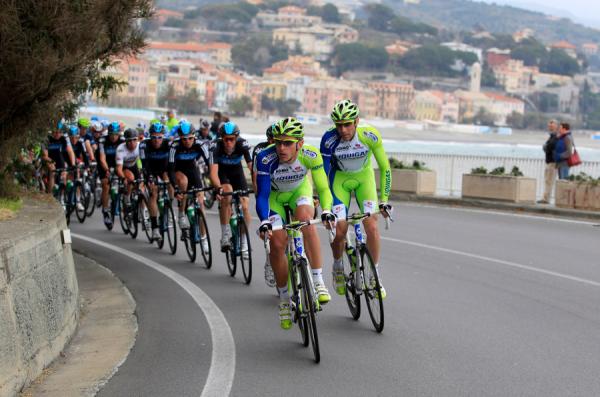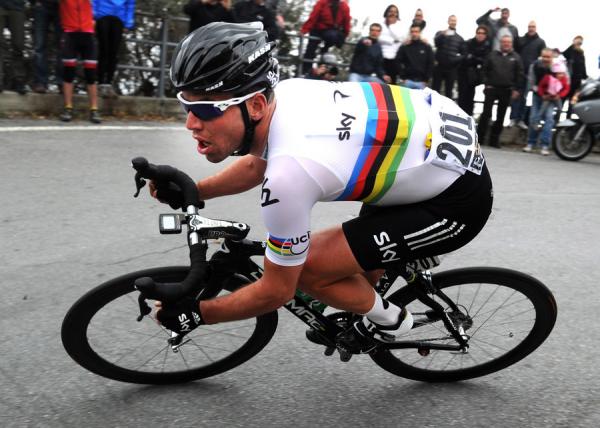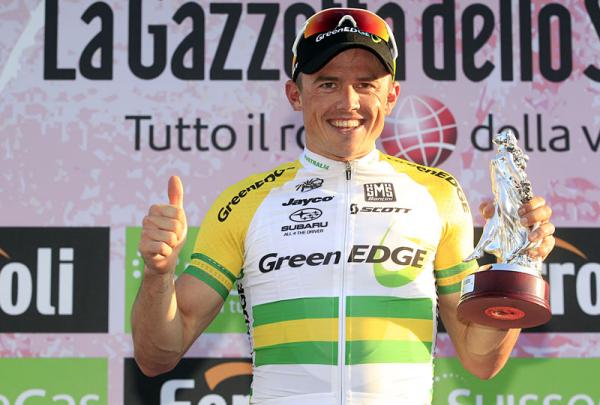10 conclusions from Milan-San Remo
Cyclingnews sums up the situation after the first Classic








1. Fabian Cancellara's (RadioShack-Nissan) racing style has skirted the thin line between bravery and folly in the big classics over the past two seasons, and Milan-San Remo was no exception. Once again, he won hearts and minds with his wholehearted attacking, and once again, he found himself thwarted by a cannier rider at the death.
Gerrans wins in Milan-San Remo
Boonen held up by Milan-San Remo crash
Few injuries from Milan-San Remo crashes
Crash ends Gilbert’s Milan-San Remo challenge
Cancellara pipped at Milan-San Remo
Cavendish's Milan-San Remo hopes fade on Le Manie
Route changes for 2013 Milan-San Remo?
There was something Sisyphean about Cancellara's plunge into San Remo, with Simon Gerrans and Vincenzo Nibali scrambling for his back wheel. Even though he surely knew that his weakness in the sprint would be exposed, he persisted in his labours nonetheless. But was simply attempting to blast riders of the caliber of Gerrans and Nibali off his wheel a glorious failure or an act of arrogance?
Cancellara triumphed at San Remo in 2008 by patiently biding his time before making one decisive attack inside the final 2km. In contrast to that clinical display, on Saturday he seemed to try and bludgeon his way to victory with repeated blows, and the result was rather less tidy.
That said, one can never step in the same river twice, and the circumstances of this year's race were different to four years ago. Once Cancellara made the decision to bridge to Gerrans and Nibali, and once it was apparent that they would not collaborate, he perhaps had little option but to attempt to burn them off his wheel. Besides, had Cancellara held his fire on the Poggio, he may well have been forced to take up the reins of the pursuit behind in any case, such is his lofty reputation.
At the Tour of Flanders and Paris-Roubaix, the Swiss rider will have tougher terrain at his disposal to make the difference in the finale, although it remains to be seen if he will show his hand as early and as often as he did in 2011.
2. Simon Gerrans (GreenEdge) didn't bat an eyelid when it was put to him in the winner's press conference that his had been a stolen victory, and with good reason. He had a cast-iron alibi in the chase group in the shape of last year's winner Matt Goss, and instead the Australian cleverly maintained the lead group's momentum with a fleeting turn on the front approaching the final kilometre.
Laudable though Cancellara's strength was, cycling would be an altogether poorer spectacle if victories were decided simply by watts produced. Tactical cunning and sheer sangfroid are just as important a part of a classic winner's make up as raw power, as Gerrans demonstrated on Saturday.
The latest race content, interviews, features, reviews and expert buying guides, direct to your inbox!
3. With Vincenzo Nibali and Peter Sagan in its ranks, Liquigas-Cannondale had two potential race-winners with contrasting styles at its disposal on Saturday, and the team set out its stall in three phases. Their first aim was to shed the peloton of the pure sprinters, and then Nibali was to go on the attack on the Poggio, while Sagan kept his powder dry for the sprint from a reduced group behind.
In the event, Liquigas succeeded in following the playbook but failed to come away with the win. Cavendish was duly shed on Le Manie, and Nibali forced the winning move on the Poggio, while Sagan took the sprint behind for fourth.
Given the ease with which Sagan held off John Degenkolb, it's tempting to suggest that Nibali should not have attacked and Liquigas should simply have ridden to set up Sagan for the sprint. However, after Valerio Agnoli swung off midway up the Poggio, Daniel Oss was the only other Liquigas rider in the front group. Would that have been enough to pull back a rampant Cancallara?
4. Marcel Kittel may be the marquee young German sprint talent at Project 1t4i, but he has some high quality company in the shape of John Degenkolb. The former HTC-Highroad rider enjoyed a fine Milan-San Remo debut. Just 23 years of age and in only his second season at the top level, Degenkolb dealt admirably with the 300km of racing and finished second in the group sprint just behind the winning break. His victor, of course, was the even more precocious Peter Sagan. Expect to see both men back at the business end of La Primavera in the years to come.
5. While the likes of Liquigas-Cannondale were always going to try and make life difficult for Mark Cavendish (Sky), it was a surprise to see the world champion eliminated from contention on Le Manie with over 90km still to race. As ever, there will be much conjecture over the true state of Cavendish's early-season fitness, but given his solid start to life in the rainbow jersey, it may simply be that he endured an off day at the most inopportune time. Certainly, it would be no surprise if he were to make a forceful response at Gent-Wevelgem next weekend – Cavendish is rarely more dangerous than when stung by perceived slights.
6. Bubbling under in the lead-up to Milan-San Remo after early season wins in Australia and Spain, Oscar Freire was quietly fancied by a number of observers to take his fourth win at La Classicissima, and when Katusha led the charge behind Cancellara, it looked as though he would conjure up a big win from nothing all over again. Instead, the chasers fell just shy of making the juncture, while Freire himself had to give best to Sagan, Degenkolb and Pippo Pozzato in the sprint for fourth. In what may be his final season as a professional, one wonders if Freire will manage to work the oracle one more time before his exits the stage.
7. Filippo Pozzato brooked his share of criticism during his final season at Katusha, but the man from Vicenza has carried himself with a renewed verve since he signed with Farnese Vini-Selle Italia ahead of the 2012 season. Training under the watchful gaze of Luca Scinto all winter, Pozzato set himself the target of slugging it out with the big hitters at San Remo, Flanders and Roubaix.
A broken collarbone at the Tour of Qatar threatened to derail his campaign, but remarkably he was back racing within a week of his operation, so desperate was he not to miss out on racing miles ahead of the classics. The gamble looked to have paid dividends on Saturday as he rode to a solid 6th place in San Remo. While it's worth noting that he finished 5th last year before the wheels came off his Katusha career in Belgium, Pozzato seems altogether more assured under Scinto's guidance, and it will be fascinating to see if he can recover his form of 2009 on the cobbles this April.
8. BMC's travails continued at Milan-San Remo, and remarkably the expensively-assembled outfit has yet to pick up a single win in 2012. Their Classicissima challenge was dented early in the week when Thor Hushovd was forced out of the race with illness, and the Norwegian was perhaps always likely to be their best chance of success. Philippe Gilbert, too, was stricken by fever and dental problems in the week before the race, and a crash over the top of the Cipressa ended his challenge before it was possible to draw any real conclusions as to his actual state of form.
Greg Van Avermaet was also a faller and it was left to Alessandro Ballan to keep their end up with an 8th place finish. While there were mitigating circumstances aplenty for their low-key showing on the road to San Remo, the galacticos will be expected to start making a telling impact on races at the very least as the focus switches to the cobbles.
9. Given his twin talents of endurance and speed, it seems almost an aberration that Tom Boonen (Omega Pharma-QuickStep) has never triumphed at Milan-San Remo. In fine form at Paris-Nice last week, no less a figure than Michele Bartoli had tipped Boonen for the win on Saturday and the Belgian appeared comfortable throughout. Caught behind a crash on the descent of the Poggio, however, Boonen lost sight of the leaders and his challenge ended. Still, his season is as ever defined by the Tour of Flanders and Paris-Roubaix, where the signs are he will renew his rivalry with Fabian Cancellara.
10. A 300km classic from Milan to San Remo is perhaps something of an anachronism, a throwback to the early years of organised racing. Certainly, one does not envisage that any new additions to the WorldTour calendar would ever feature such a lengthy point-to-point race. That said, throughout its history, the organisers have often updated the race by tweaking its format slightly, adding the Poggio (1960), Cipressa (1982) and Le Manie (2009).
Change may be afoot again as soon as next year, with rumours of a steeper route to the top of the Cipressa and a finish line closer to the Poggio. The idea to give attackers more of a chance to finish alone, but as has been the case since 1907, it's the riders rather than the route that will be the making of the race.

Barry Ryan was Head of Features at Cyclingnews. He has covered professional cycling since 2010, reporting from the Tour de France, Giro d’Italia and events from Argentina to Japan. His writing has appeared in The Independent, Procycling and Cycling Plus. He is the author of The Ascent: Sean Kelly, Stephen Roche and the Rise of Irish Cycling’s Golden Generation, published by Gill Books.